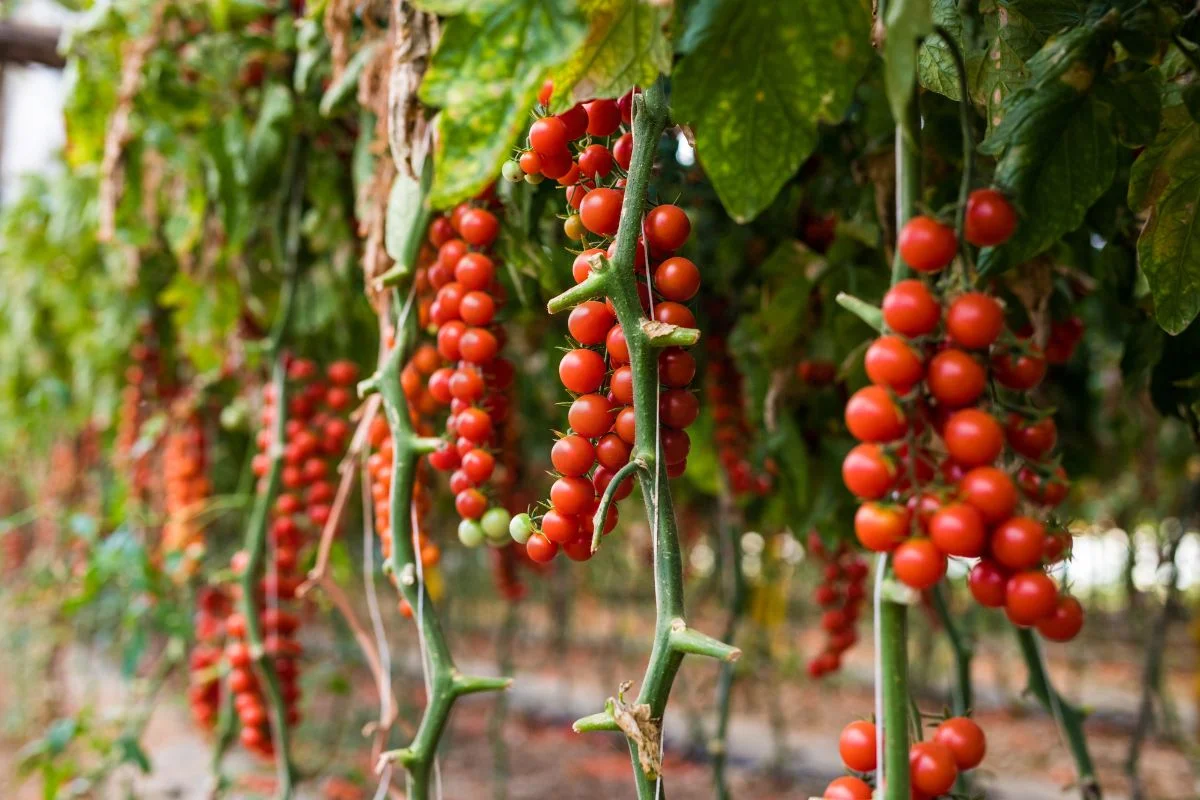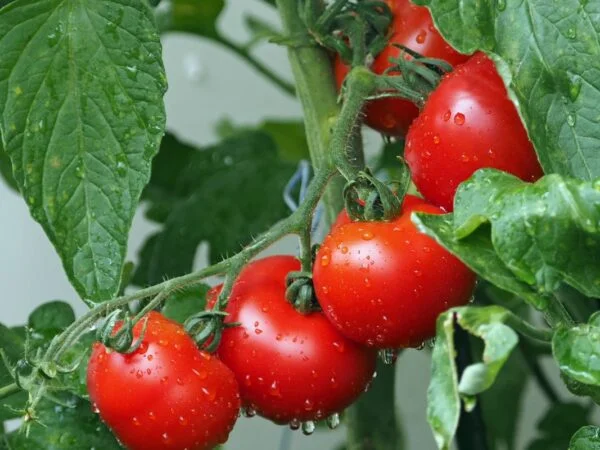Are you wondering how to grow tomatoes horizontally? Don't worry, you're in the right place. With the right guidance and techniques, gardeners can successfully transplant and cultivate tomatoes in a horizontal manner, maximizing space, yield, and ripening.
Growing tomatoes horizontally involves using structures like trellises, cages, or stakes to support the plants as they sprawl along the ground. This method is particularly beneficial for smaller gardens or limited space areas where vertical growth isn't feasible. By training the tomato vines to grow sideways, you can effectively manage their growth, improve air circulation, and make harvesting easier. Additionally, horizontal tomato growing can help reduce diseases and pests by keeping the foliage off the ground. Overall, it's a practical and efficient way to cultivate tomatoes in various gardening environments.
Ready to explore the world of horizontal tomato gardening further? Discover more about the best techniques, suitable varieties, and maintenance tips to ensure a bountiful harvest and a thriving garden. Whether you're a beginner or an experienced gardener, there's always more to learn and experiment with when it comes to growing tomatoes horizontally.
Key Takeaways
- Benefits of Horizontal Planting
- Increase space efficiency and sunlight exposure for tomato plants.
- Understanding Horizontal Planting
- Horizontal planting involves laying tomato plants on their sides instead of upright.
- Choosing the Right Time
- Opt for early morning or late afternoon to avoid heat stress on plants during planting.
- Preparing the Soil
- Ensure well-draining soil with organic matter for optimal growth.
- The Trench Method
- Dig a trench, lay the tomato plant horizontally, and cover the stem with soil.
- Planting Steps Simplified
- Lay the tomato plant sideways, remove lower leaves, and water thoroughly after planting.
Benefits of Horizontal Planting
Maximizing Root Growth
Choosing a deep container for planting tomatoes horizontally is crucial for encouraging extensive root growth. The wide trench allows the roots to spread comfortably, aiding in nutrient absorption. Opt for a well-draining soil mix to prevent waterlogging and promote healthy root development.
Increased Production
Horizontal planting of tomatoes can boost fruit production through better nutrient distribution. Regularly pruning suckers redirects energy towards fruit production, increasing overall yield. Support plants with trellises or stakes to prevent fruit loss and ensure optimal growth conditions.
Healthier Plants
Growing tomatoes horizontally reduces disease risk from soil splashing, resulting in healthier plants. Proper spacing between plants enhances air circulation, reducing fungal infection risks. Regularly check for pests or diseases and take immediate action to maintain plant health.
Understanding Horizontal Planting
What is Horizontal Planting
Horizontal planting involves laying tomato plants on their sides in a trench rather than planting them vertically. This technique maximizes nutrient absorption and encourages stronger root development. By planting tomatoes horizontally, you provide a larger surface area for roots to access nutrients and water.
Importance of Technique
Proper technique when planting tomatoes horizontally is crucial for successful growth. This method promotes efficient nutrient uptake and supports the overall health of the plant. Understanding the technique behind horizontal planting can result in a bountiful harvest of tomatoes.
Choosing the Right Time
Best Transplant Day
When transplanting tomatoes horizontally, choose the best day based on weather and plant maturity. Optimal transplant days ensure successful establishment in the new position. Consider temperature and sunlight for the ideal transplant day.
List:
- Weather conditions
- Plant maturity
- Temperature and sunlight exposure
Deciding on the best day for transplanting tomatoes horizontally is crucial for their successful growth. By considering factors such as weather conditions, plant maturity, temperature, and sunlight exposure, you can ensure that the plants establish well in their new horizontal position.
Preparing the Soil
Soil Amendment
Amend the soil with organic matter to enhance soil structure and fertility for horizontal tomato planting. Incorporate compost or aged manure for essential nutrients, improving water retention and drainage.
Create a nutrient-rich environment by adding balanced fertilizer before planting tomatoes horizontally. Ensure the soil pH is optimal to maximize nutrient absorption and monitor nutrient levels during the growing season.
The Trench Method
Creating the Trench
Dig a trench to fit the entire length of the tomato plant horizontally for optimal growth. Make it wide enough to accommodate the plant comfortably and allow room for root expansion. Smooth out the bottom of the trench to create a stable foundation for the tomato plant.
Placing Tomatoes Sideways Gently lay the tomato plant horizontally in the trench, ensuring that the stem remains straight and undamaged. Position the plant so that only the top leaves are visible above the soil level to support healthy growth. Avoid burying the plant too deeply to prevent rot and ensure proper development.
Planting Steps Simplified
Sideways Placement in Trench
Lay the tomato plant horizontally in the trench, avoiding stem damage. Position the main stem parallel to the ground for optimal growth. Ensure even placement for uniform root distribution.
Fill the trench gradually with soil, covering the exposed stem of the tomato plant. Gently pack soil around the plant for support and stability. Create a slight depression around the base to collect water during watering.
Filling the Trench
Water the newly planted tomato horizontally immediately after filling the trench to settle the soil. Thoroughly hydrate roots and promote establishment in a horizontal position. Monitor soil moisture closely post-planting to prevent dehydration.
Initial Watering
- Lay tomato plant horizontally in trench
- Fill trench with soil gradually
- Water newly planted tomato horizontally immediately after filling trench
Aftercare and Maintenance
Watering Schedule
Establish a consistent watering schedule for horizontally planted tomatoes to maintain soil moisture levels. Water deeply but infrequently to encourage deep root growth and drought tolerance. Adjust the watering frequency based on weather conditions and plant needs throughout the growing season.
When watering, avoid shallow watering that only wets the topsoil. Instead, focus on providing a good soak to ensure the roots receive adequate moisture. This method promotes stronger root systems for healthier plants.
To prevent issues like blossom end rot, maintain even moisture levels by avoiding erratic watering patterns. Consistency in watering helps tomatoes grow evenly without stress from fluctuating hydration levels.
Staking and Support
Install stakes or trellises near horizontally planted tomatoes to provide support as they grow. Secure the plants to the stakes gently using soft ties to prevent damage to the stems. Regularly check the support structures and adjust as needed to accommodate the plant's growth.
Staking not only supports the tomato plants but also aids in preventing fruit rot by keeping them off the ground. This method ensures better air circulation around the plant, reducing the risk of diseases caused by excess moisture.
Consider using adjustable ties for securing tomatoes to stakes or trellises. These ties allow for flexibility as the plant grows, preventing constriction that can harm stem development.
Troubleshooting Common Issues
Disease Prevention
To prevent diseases when growing tomatoes horizontally, ensure proper spacing between plants to allow for good air circulation. This reduces the risk of fungal infections. Opt for disease-resistant tomato varieties, decreasing the likelihood of plant diseases. Promptly remove any diseased plant material to stop pathogens from spreading.
Pest Control
Regularly monitor your tomato plants for pest infestations, taking swift action upon detection. Introduce beneficial insects like ladybugs or lacewings to naturally control pests without harmful chemicals. Utilize row covers as physical barriers to shield horizontally grown tomatoes from common pests like aphids and caterpillars.
Harvesting Rewards
When to Harvest
Determining the optimal time to harvest tomatoes is crucial for flavor and nutrition. Watch for color changes and check the fruit's firmness. Harvest when fully ripe on the vine for the best results.
Gently twist or cut the tomatoes from the plant to avoid damaging stems or other fruit. This ensures a successful harvest without compromising future growth. Enjoy fresh, flavorful tomatoes by picking them at their peak ripeness.
Enjoying the Bounty
Celebrate your hard work in growing tomatoes horizontally by relishing in fresh, homegrown produce. Try out various recipes and preservation methods to make the most of your tomato harvest. Share this bounty with loved ones to spread the joy of homegrown goodness.
Experimenting with different ways of enjoying your tomatoes can enhance your culinary experience. From salads to sauces, there are numerous ways to savor the fruits of your labor. By sharing your harvest, you not only spread happiness but also inspire others to grow their own produce.
Summary
You've learned the benefits of growing tomatoes horizontally, from maximizing space to improving airflow and sunlight exposure. Understanding the process, choosing the right time, preparing the soil, using the trench method, planting correctly, aftercare, troubleshooting, and finally reaping your harvest are all crucial steps in this rewarding journey. By following these steps diligently, you're well on your way to a bountiful tomato harvest!
Now it's your turn to get your hands dirty and start growing those tomatoes horizontally. Remember, the key is in the details: timing, soil preparation, planting techniques, and ongoing care. Your efforts will soon pay off with juicy, homegrown tomatoes that you can proudly enjoy. Happy gardening!
Frequently Asked Questions
Can tomatoes be grown horizontally?
Yes, tomatoes can be successfully grown horizontally, offering benefits such as better air circulation, increased sunlight exposure, and efficient use of space in your garden.
How do I prepare the soil for horizontal tomato planting?
Prepare the soil by loosening it to a depth of 12 inches, incorporating organic matter like compost or aged manure, and ensuring proper drainage to promote healthy root development for your tomatoes.
What is the trench method for planting tomatoes horizontally?
The trench method involves digging a shallow trench along the planting row, laying the tomato plant sideways with only the top leaves above ground level, and covering the stem with soil. This encourages strong root growth and stability.
When is the right time to plant tomatoes horizontally?
Plant tomatoes horizontally after the last frost date in your area when the soil has warmed up to around 60°F (15°C). This timing allows the plants to establish well and thrive throughout the growing season.
How can I troubleshoot common issues with horizontal tomato planting?
Common issues like poor drainage, inadequate sunlight, pests, or diseases can be addressed by ensuring proper soil preparation, regular monitoring of plant health, implementing pest control measures, and providing necessary support for your tomato plants.
Image Source: Paid image from CANVA



